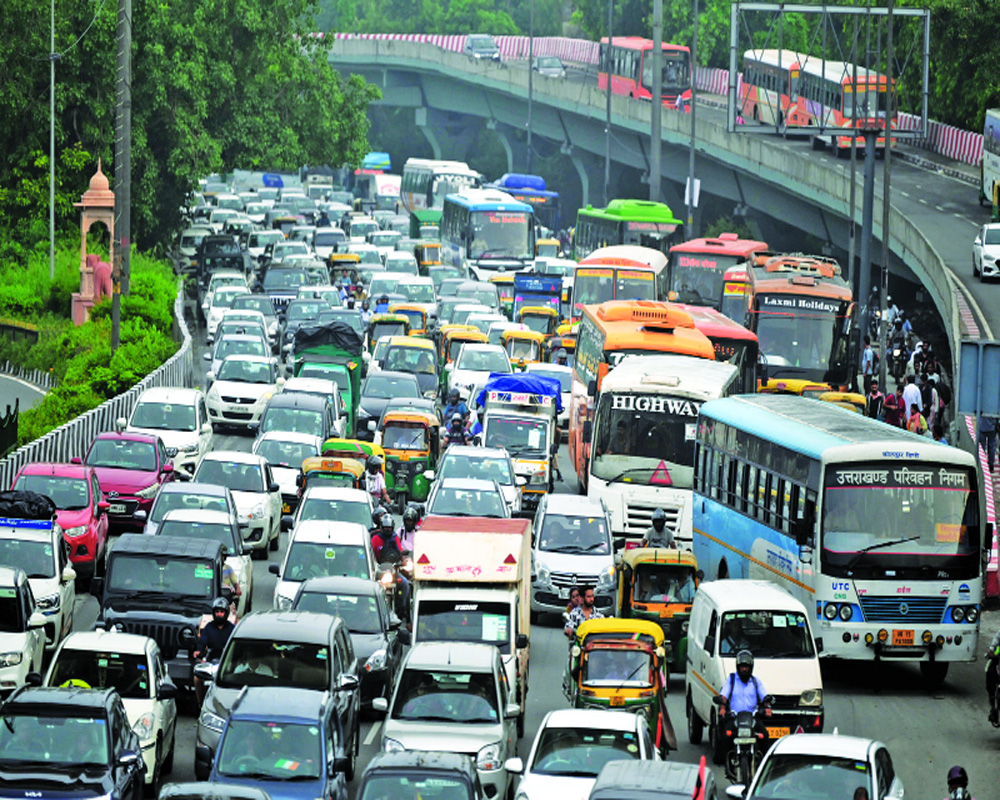Heads up Delhi drivers, joyrides may be vanish
Worried over increasing traffic jams, the Delhi government is mulling to introduce a congestion tax to reduce traffic during peak hours to tackle congestion. Inspired by cities like London, New York, and Singapore, the Delhi government is planning to introduce a congestion tax on vehicles entering the city during peak hours - 8 am to 10 am and 5.30 pm to 7.30 pm - through 13 major entry points along its borders.
According to officials, the proposal is currently in its advanced stages of planning. The pilot programme will focus on 13 key entry points around Delhi's borders and will utilise a barrier-free charging mechanism that incorporates FASTag technology and number plate recognition systems, avoiding manual collection to prevent traffic bottlenecks.
The move aims to address traffic congestion and reduce pollution. This is the third time the Delhi government is contemplating introducing a congestion tax to reduce traffic burden on the capital's roads. The Pioneer has been running a campaign highlighting traffic jams in the national capital, highlighting the woes of daily commuters.
However, the implementation of this congestion tax is not without its challenges. Officials are in the process of establishing a legal framework that will support the enforcement of the tax, alongside necessary modifications to existing Delhi and Central Motor Vehicle regulations.
The revenue generated from the tax, along with any penalties, will be used to enhance public transportation and improve road infrastructure, particularly for vulnerable users such as cyclists and pedestrians.
The influx of vehicles from nearby rapidly expanding towns and the flow of commercial goods vehicles have contributed to the increased vehicular traffic entering Delhi. Currently, several border areas, including DND and New Ashok Nagar, are major choke points. According to the transport department, two wheelers account for 66 per cent and growth rate is touching nine per cent.
Cars occupy more than 70 per cent of road space but account for less than 20 per cent of passengers carried daily. This is not the first time such a measure has been considered in Delhi. Similar proposals were discussed in the past, but could not be implemented.
In 2017, a Parliamentary committee had also recommended levying a toll on congested stretches in the Capital. In 2018, a plan was introduced to impose a congestion tax on vehicles along 21 high-traffic stretches in the city, including sections like the Aurobindo Chowk-Andheria More corridor, the Nehru Place to Modi Mills flyover, areas around Hauz Khas Metro station, and the ITO intersection.
In 2008, then Chief Minister Sheila Dikshit suggested an additional charge on private vehicles entering the capital to promote public transport. However, the proposal was eventually shelved.
Former Delhi Transport Commissioner Rajni Kant Verma who conceptualised the project for the first time in 2008, told the pioneer that he had made a presentation before the then Chief Minister Sheila Dikshit and Chief Secretary PK Tripathi but the Congress government was not interested due to backlash from voters. The concept is good to reduce traffic burden on the roads. “If executed, congestion will come down at atleast 26 per cent; traffic reduction by 15 per cent; Nitrogen Oxide will come down by 13 per cent and PM 10 by 15 per cent. Accidents are also expected to drop by 40-70 per annum and bus usage will also go up one to three per cent, and that will help to increase revenue,” he said.
Verma said the government would have to create an infrastructure in place before introducing the Congestion tax in Delhi. “All vehicles should be registered. There should be an intelligent traffic signalling system in Delhi,” said Verma, adding that this is a very complex issue which needs to be handled carefully.
The survey at nine entry points showed that around 3.07 lakh cars and 1.27 lakh two-wheelers entered Delhi daily. Besides, 70,000 commercial vehicles enter Delhi daily. This number increases to over one lakh when considering all 127 entry points into the city. In 2023, Delhi saw a record number of vehicle sales, with over 6.5 lakh vehicles registered.
According to the Economic Survey of Delhi, the total number of motor vehicles on road in the national capital on March 31, 2023 was 79.45 lakh, showing the increase by 0.34 per cent from 2021-22. The government has banned Diesel Vehicles more than 10 years old and Petrol Vehicles more than 15 years old, and hence 'deregistered' 62,59,214 vehicles till 2022-23.
During the period of 2022-23, the number of vehicles per thousand population is 473 (As per Census 2011) which is not much affected from 2021-22 (472). Total motorised vehicles in Delhi are 79.45 lakh. Cars and jeeps accounted for around 26 per cent of the total registered motorised vehicles, whereas two wheelers are about 66.64 per cent of total registered vehicles.
























